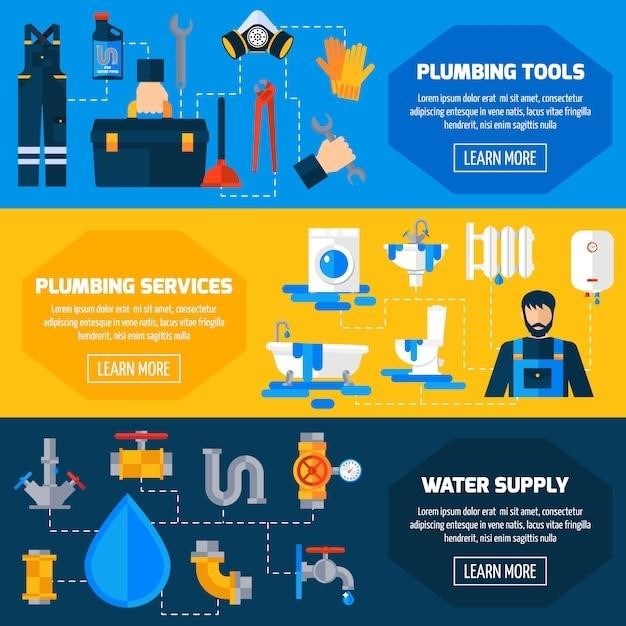
Changing Valve Guides⁚ A Comprehensive Guide
This comprehensive guide will walk you through the process of changing valve guides, a crucial component in your engine’s performance. Valve guides play a critical role in the function of today’s internal combustion engines, ensuring proper alignment and function of the engine valves, which are essential for introducing air for combustion or eliminating post-combustion exhaust gases from the cylinder. Whether you’re a seasoned mechanic or a DIY enthusiast, this guide will equip you with the knowledge and steps needed to successfully replace worn-out valve guides and restore your engine to optimal performance.
Introduction
Valve guides are essential components in an internal combustion engine, playing a crucial role in ensuring the proper function and alignment of engine valves. These valves are responsible for controlling the flow of air and exhaust gases into and out of the cylinders, ultimately influencing the engine’s performance and efficiency. However, over time, valve guides can wear down due to friction, heat, and the constant movement of the valves. This wear can lead to a range of issues, including increased oil consumption, reduced engine power, and even engine damage.
When valve guides wear out, they can no longer properly guide the valves, allowing oil to seep into the combustion chamber, causing blue smoke from the exhaust, and requiring more frequent oil top-ups. In severe cases, worn-out valve guides can lead to valve damage, further compromising engine performance and potentially causing catastrophic engine failure. Therefore, it is crucial to recognize the signs of worn valve guides and address the issue promptly. This guide will provide you with the necessary information and steps to replace worn-out valve guides, restoring your engine to optimal performance and extending its lifespan.

Understanding Valve Guides
Valve guides are cylindrical sleeves made of materials like bronze or steel, precisely fitted into the cylinder head. They provide a smooth and accurate path for the valve stems to move up and down, ensuring proper sealing and preventing excessive wear on the valve stem and the cylinder head. These guides create a critical seal between the combustion chamber and the engine’s lubrication system, preventing oil from leaking into the combustion chamber and potentially causing issues like increased oil consumption and blue smoke from the exhaust.
Valve guides are designed to withstand the high temperatures and pressures found inside an engine, but they are not indestructible. Over time, they can wear down due to friction, heat, and the constant movement of the valve stems. The wear on valve guides can lead to a variety of problems, including⁚
- Increased oil consumption
- Reduced engine power
- Blue smoke from the exhaust
- Valve damage
- Engine failure
If you suspect your valve guides are worn, it’s essential to address the issue promptly to prevent further damage and ensure the longevity of your engine. This comprehensive guide will provide you with the information and steps needed to replace worn-out valve guides and restore your engine to peak performance.

Signs of Worn Valve Guides
Recognizing the signs of worn valve guides is crucial for timely intervention and preventing further damage to your engine. While worn valve guides can manifest in various ways, some common indicators should prompt you to investigate further. One of the most noticeable signs is increased oil consumption. Worn valve guides allow oil to seep into the combustion chamber, leading to excessive oil burning and a bluish smoke coming from the exhaust. This excessive oil consumption might require frequent oil top-ups, signaling a potential issue with your valve guides.
Another symptom is a decrease in engine performance. Worn valve guides can compromise the sealing of the valve stem, leading to reduced compression and a loss of power. You might notice a decrease in acceleration or a rough idle, which can be attributed to the faulty valve guides.
A visual inspection can also reveal signs of worn valve guides. If you notice excessive side play in the valve stem when it’s off-seat, it suggests worn guides. Additionally, if you see oil residue around the valve stem, it can indicate oil leaking past the valve guides, indicating a potential issue. If you suspect worn valve guides, it’s recommended to have your engine inspected by a qualified mechanic to confirm the diagnosis and discuss the necessary repair or replacement.
Tools and Materials Needed
Changing valve guides requires a set of specialized tools and materials to ensure a successful and efficient repair. You’ll need a valve spring compressor to safely compress the valve springs and allow access to the valve guides. A valve guide removal tool is essential for extracting the worn valve guides without damaging the cylinder head. A valve guide installation tool is needed to accurately and securely install the new valve guides. This tool typically includes a press and a guide to ensure proper alignment during installation.
You’ll also need a set of wrenches and sockets to remove and install the cylinder head and other components. A torque wrench is crucial to tighten bolts and nuts to the manufacturer’s specifications to prevent overtightening and potential damage. A dial indicator is helpful for checking the valve guide clearance and ensuring it’s within the manufacturer’s specifications. A cleaning solution and brushes are essential to thoroughly clean the cylinder head and other components before reassembly.
Finally, you’ll need the new valve guides, which are typically made of bronze or steel. Ensure you purchase the correct size and type of valve guides for your engine model. It’s always advisable to consult a reputable parts supplier or your engine’s service manual to verify the correct specifications for your specific application.
Removing the Valve Guides
The removal of worn valve guides is a meticulous process that requires careful attention to detail. Begin by removing the cylinder head from the engine block, taking care to loosen and remove all bolts in a sequential pattern to avoid warping the head. Once the cylinder head is removed, carefully remove the valve springs using a valve spring compressor. This step is crucial to ensure the valves remain securely in place and prevent damage to the valve train components.
Next, position the cylinder head on a suitable workbench and secure it for stability. Using the valve guide removal tool, carefully insert the tool into the valve guide bore. The tool is designed to grip and extract the valve guide without damaging the surrounding cylinder head material. Apply gentle but firm pressure to the tool to remove the valve guide. If the valve guide proves difficult to remove, consider using a specialized guide removal tool or consulting a professional mechanic.
Once the valve guide is removed, inspect the bore for any signs of damage, wear, or debris. Clean the bore thoroughly using a cleaning solution and brush to ensure a clean surface for the new valve guide. Repeat this process for each valve guide that needs to be replaced. Remember to work carefully and systematically to avoid damaging any other components during the removal process.
Installing New Valve Guides
Installing new valve guides requires precision and care to ensure a proper fit and long-lasting performance. Before installation, ensure the new valve guides are the correct size and material for your engine. Check the manufacturer’s specifications to confirm compatibility. It is important to lubricate the new valve guides with a light oil or assembly lube before installation. This will facilitate smooth insertion and reduce the risk of damage.
Using the valve guide installation tool, gently insert the new valve guide into the bore. Align the guide with the bore and apply consistent pressure to ensure a secure fit. The installation tool is designed to guide the valve guide into the bore without damaging the surrounding cylinder head. Once the valve guide is fully installed, check for any signs of misalignment or improper seating.
After installation, use a valve guide reamer to ensure a precise fit and smooth operation. The reamer will remove any burrs or imperfections from the guide bore, ensuring a clean and consistent surface for the valve stem. Once the reaming process is complete, clean the bore thoroughly to remove any debris. Repeat this process for each new valve guide installed. By adhering to these steps, you can ensure a proper installation and optimal performance of the new valve guides.
Testing and Adjustment
After installing the new valve guides, it’s crucial to test their functionality and make any necessary adjustments. A thorough inspection is essential to ensure that the valve guides are properly seated and functioning as intended. Start by inspecting the valve stem seals for any signs of damage or leaks. Damaged seals can compromise the engine’s performance and lead to oil consumption. Replace any damaged seals to ensure proper sealing.
Next, check the valve stem clearance. This is the space between the valve stem and the valve guide. Proper clearance is essential for smooth valve operation. Use a feeler gauge to measure the clearance between the valve stem and the guide. Refer to the manufacturer’s specifications for the appropriate clearance for your engine. If the clearance is out of spec, you may need to adjust the valve guide or replace it with a different size.
Finally, test the valve guide’s function by cycling the valves. This will ensure that the valves are moving smoothly and that the guides are not causing any friction or binding. Listen for any unusual noises or resistance during the cycling process. If any issues are identified, address them before proceeding further. By conducting these tests and making any necessary adjustments, you can ensure optimal performance and longevity of your engine’s valve train.
Replacing valve guides is a critical maintenance procedure that ensures proper valve operation and engine performance. By following the steps outlined in this comprehensive guide, you can confidently tackle this task and restore your engine to optimal condition. Remember, proper preparation, careful execution, and adherence to safety precautions are essential for a successful valve guide replacement.
After completing the installation, thoroughly inspect your work and test the engine for proper function. Listen for any unusual noises or signs of leaks. If any issues arise, address them promptly. With proper attention to detail and the right tools, replacing valve guides can be a rewarding experience, ensuring that your engine runs smoothly and efficiently for years to come.
This guide has provided you with the knowledge and steps necessary to confidently undertake this task; By taking the time to understand the process and follow the instructions carefully, you can achieve a successful valve guide replacement, restoring your engine to peak performance and extending its lifespan.
Safety Precautions
Changing valve guides involves working with potentially hazardous tools and components. It is crucial to prioritize safety throughout the process. Here are some essential precautions to take⁚
Wear appropriate protective gear⁚ Always wear safety glasses to protect your eyes from flying debris. Use gloves to protect your hands from sharp edges and hot components. A respirator mask is recommended to prevent inhaling dust and fumes.
Work in a well-ventilated area⁚ Engine work generates dust and fumes. Ensure adequate ventilation to prevent inhaling harmful particles.
Use proper lifting techniques⁚ Engine components can be heavy. Use proper lifting techniques and seek assistance if needed to avoid injuries.
Handle tools with care⁚ Use caution when handling sharp tools like chisels and punches. Ensure tools are in good condition and properly maintained.
Avoid contact with hot components⁚ Engine parts can become very hot during operation. Allow ample time for components to cool before handling. Use heat-resistant gloves if necessary.
Be aware of flammable materials⁚ Engine fluids, such as gasoline and oil, are flammable. Keep them away from heat sources and open flames.
Follow manufacturer’s instructions⁚ Always refer to the manufacturer’s service manual for specific safety guidelines and procedures relevant to your particular engine model.
By adhering to these safety precautions, you can minimize the risk of accidents and ensure a safe working environment.
Troubleshooting Common Issues
While changing valve guides is a relatively straightforward process, you might encounter certain challenges along the way. Here are some common issues and their possible solutions⁚
Stuck valve guides⁚ If the valve guides are stuck, try using a guide removal tool or a combination of heat and gentle tapping to loosen them. Avoid excessive force to prevent damage to the head.
Damaged valve guide bores⁚ If the valve guide bores are damaged, they may need to be repaired or replaced. Consider using a reaming tool to enlarge the bore slightly, or seek professional assistance for more extensive repairs.
Incorrect valve guide installation⁚ Ensure the new valve guides are properly installed with the correct orientation and depth. Use a guide installation tool to achieve a secure and accurate fit.
Valve guide seal issues⁚ If the valve guide seals are damaged or worn, they may need to be replaced. Ensure the new seals are properly installed and lubricated to prevent leaks.
Valve stem damage⁚ Inspect the valve stems for damage during the guide removal process. Replace any damaged stems to prevent further issues.
If you encounter any persistent issues or experience difficulty troubleshooting, consult a qualified mechanic for assistance. Proper diagnosis and repair will ensure the longevity and optimal performance of your engine.
Alternative Methods
While the traditional method of removing and installing valve guides involves specialized tools and careful precision, there are alternative methods available, each with its own advantages and disadvantages⁚
Knurling⁚ This method involves using a knurling tool to create a rough surface on the inside of the valve guide, which helps to improve the seal and reduce wear. Knurling can be a quick and relatively inexpensive solution for minor wear, but it may not be suitable for severely worn guides.
Valve guide sleeves⁚ Instead of replacing the entire guide, you can install a sleeve that fits inside the existing guide bore. This method is often used when the guide bore is slightly worn but not severely damaged. Sleeves can be easier to install than full replacement guides and may require less machining.
New valve guide⁚ This is the most common and effective method for replacing worn valve guides. It involves removing the old guides and pressing in new ones, ensuring a tight fit and proper alignment. This approach offers the most comprehensive solution for addressing severe wear and restoring optimal performance.
The choice of method will depend on the severity of the wear, the engine type, and your budget. Consult with a qualified mechanic to determine the most appropriate solution for your specific needs.





No comment yet, add your voice below!